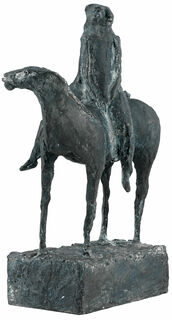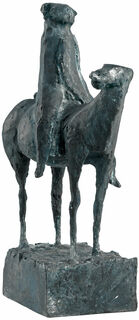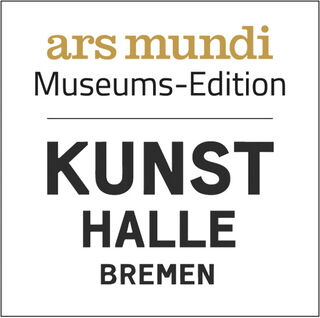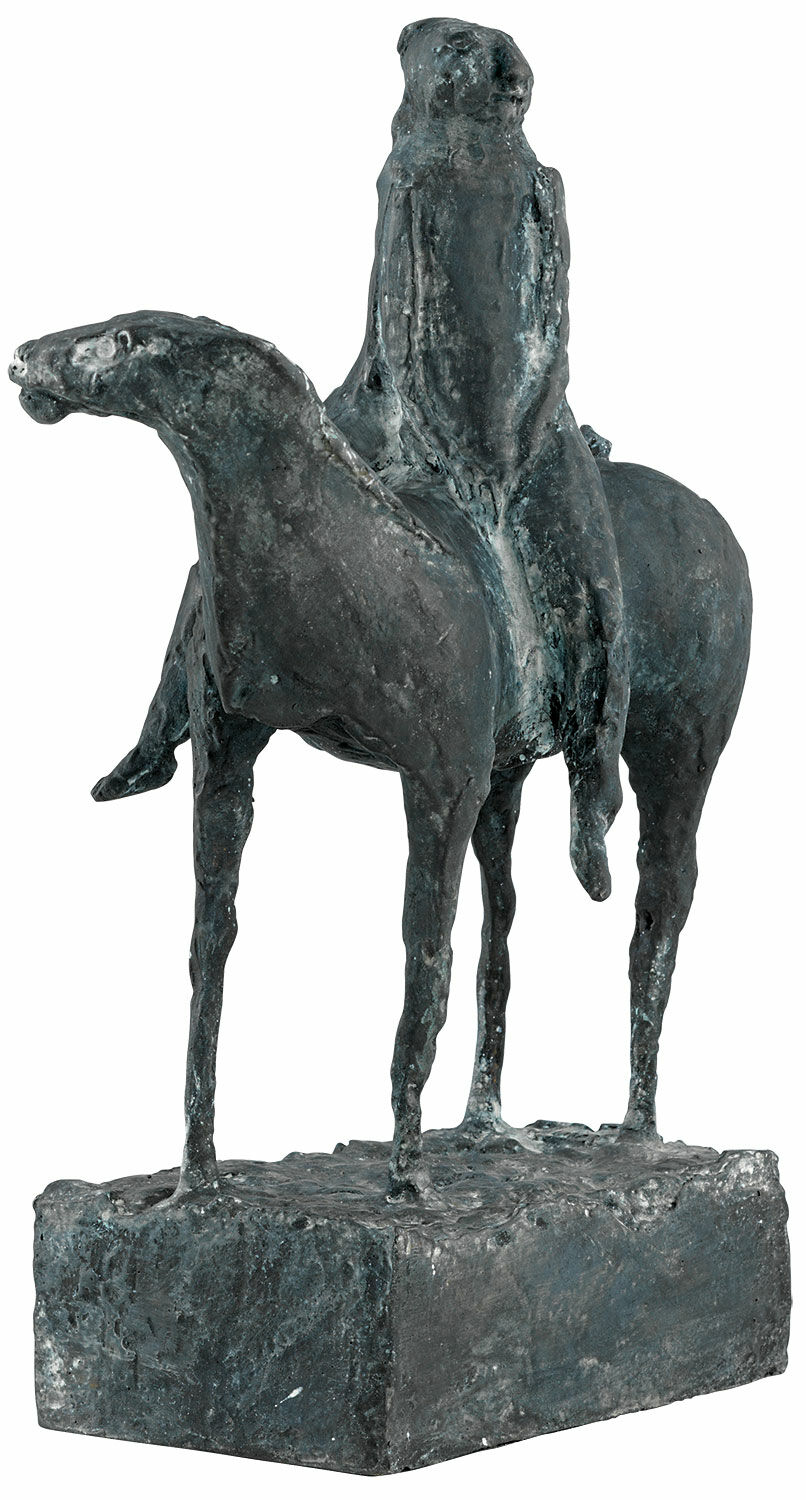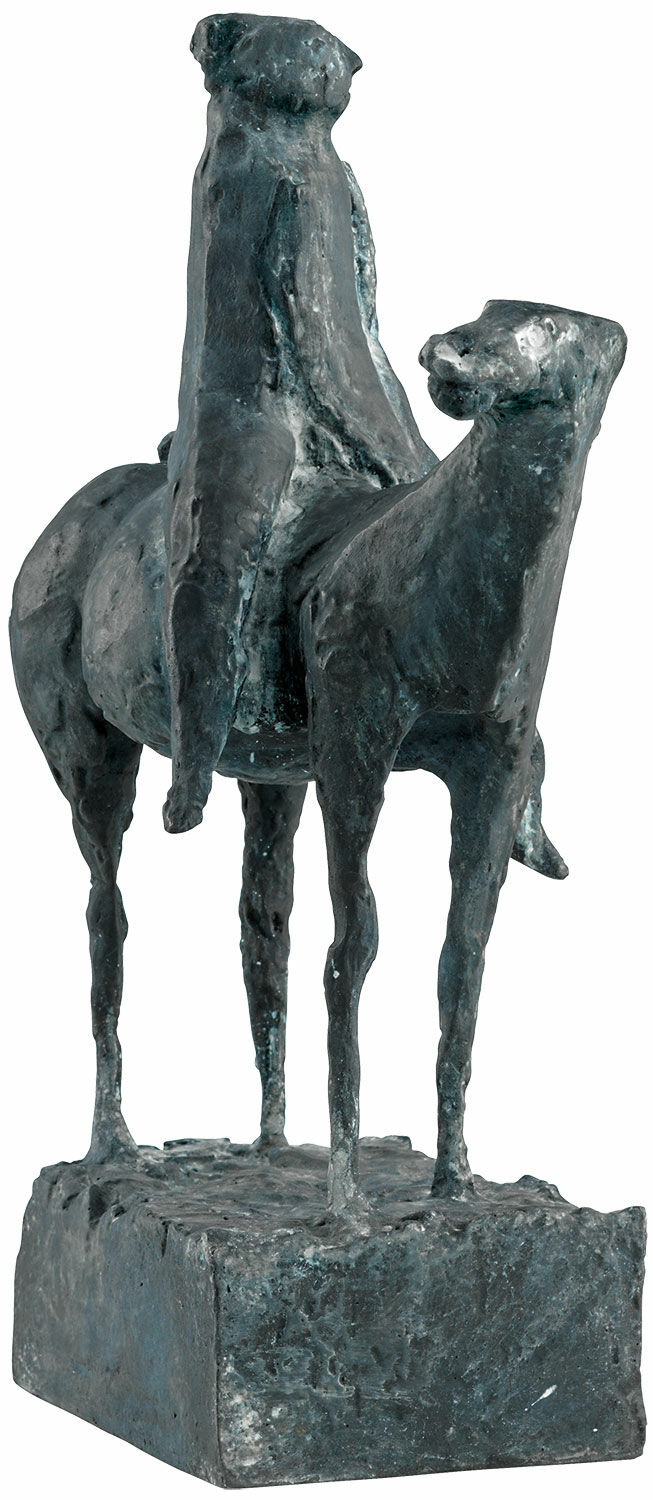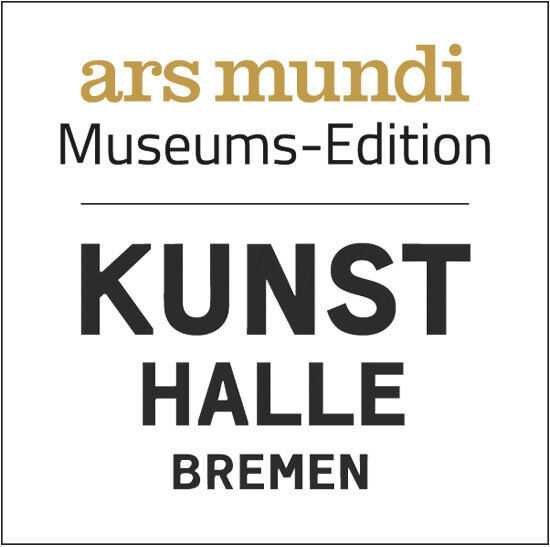Sculpture "Little Rider" (1947), reduction in bronze
Sculpture "Little Rider" (1947), reduction in bronze
Quick info
ars mundi Exclusive Edition | limited, 150 copies | numbered | signature | foundry hallmark | certificate | bronze | chased | polished | patinated | reduction | size 33.5 x 23.5 x 11.5 cm (h/w/d) | weight approx. 3.8 kg
Video
Detailed description
Sculpture "Little Rider" (1947), reduction in bronze
Marino Marini's "Little Rider": ars mundi Exclusive Edition, published together in collaboration with the Kunsthalle Bremen.
The rider on horseback - this motif has been known in art history since antiquity, and it usually represents the powerful, the emperor and king and power in general. However, the modern age is beginning to reinterpret it, to distort it beyond recognition.
Our exclusive edition, limited to only 150 copies worldwide, offers you the work of an artist who, along with Giacometti and Moore, is one of the most important sculptors of the past century. His equestrian stature, though, is anything but an expression of power.
The theme of "horse and rider" fascinated Marino Marini for decades. His earliest works show them as a harmonious, finely crafted unity. The experiences of war, however, changed his main subject. Thus, his motif became a diagnosis of time - and ultimately a call in bronze to stand up against the impending disaster.
Original: Bronze, 41 x 28.5 x 13.5 cm, inv. no. 410- 1961/1, Kunsthalle Bremen - Der Kunstverein in Bremen.
Sculpture in fine bronze, cast using the Lost-Wax-Process, chiselled by hand, polished and patinated. Limited edition of 150 copies, individually numbered and signed "M.M.", taken from the original and bearing the foundry and ars mundi hallmarks. With a numbered certificate of authenticity and limitation. Size with pedestal 33.5 x 23.5 x 11.5 cm (w/h/d). Weight approx. 3.8 kg. ars mundi Exclusive Edition. © VG Bild-Kunst, Bonn 2021.
"Marino Marini's sculpture of 1947 conveys no expression of control or strong leadership. The reins are loose, and the horse and rider look in different directions. With this figure, Marini reflects the events of his time. For me, the little rider is thus also a reminder that it is important to remain alert and to observe current events attentively. You need a clear stance because everything else leads to disoriented powerlessness." (Prof. Dr Christoph Grunenberg, Director of the Kunsthalle Bremen)
About Marino Marini
1901-1980
The subject "horse and rider" appears repeatedly in the oeuvre of Marino Marini, who was one of the most important sculptors of Classical Modernism. The artist justified his choice of motifs by the fact that his studio in Monza, where he lived in the 1930s, was located next to a horse stable.
Whereas the studies he made in the 1930s were realistic and anatomical drawings, his sculptures and colour-intensive lithographs produced in the 1960s/70s were subject to his ever-increasing pessimism. "My equestrian statues express the torment caused by the events of this century. The restlessness of my horse grows with each new work, the rider appears increasingly worn out, he has lost his dominance over the beast and the catastrophes to which he succumbs are similar to those which destroyed Sodom and Pompeii." This also explains why the Italian artist's formal style is characterised by a tension between abstraction and figuration.
He began studying at the Academy of Fine Arts in Florence at the age of 16. When he was 28 years old, he succeeded as a professor of sculpture at the Scuola d’Arte di Villa Reale in Monza. In 1932, his great success began with his participation in the Venice Biennale. At the end of the 1940s, he achieved his international breakthrough with his famous equestrian figures.
His best-known work is probably a figure riding a horse on the terrace of the Peggy Guggenheim Collection in the Palazzo Venier dei Leoni directly along the Grand Canal in Venice. A famous story is how the former owner, Peggy Guggenheim, asked the artist to put mounting equipment on the riding figure so that it could be removed on holidays when the nuns of St. Maria della Salute passed by the palazzo in their boat.
He received many awards for his work, including the prize at the 1936 Rome Quadrennial and the Grand Prize for Sculpture at the 1952 Venice Biennale. His extensive graphic work is also represented in the world's major museums. The Marino Marini Museum, opened in Milan in 1973, pays tribute to his great life's work.
An alloy of copper with other metals (especially with tin) used since ancient times.
When casting bronze, the artist usually applies the lost-wax technique which is dating back more than 5000 years. It's the best, but also the most complex method of producing sculptures.
First, the artist forms a model of his sculpture. It is embedded in a liquid silicone rubber mass. Once the material has solidified, the model is cut out. The liquid wax is poured into the negative mould. After cooling down, the wax cast is removed from the mould, provided with sprues and dipped into ceramic mass. The ceramic mass is hardened in a kiln, whereby the wax flows out (lost mould).
Now we finally have the negative form, into which the 1400° C hot molten bronze is poured. After the bronze had cooled down, the ceramic shell is broken off and the sculpture is revealed.
Now the sprues are removed, the surfaces are polished, patinated and numbered by the artist himself or, to his specifications, by a specialist. Thus, each casting becomes an original work.
For lower-quality bronze castings, the sand casting method is often used which, however, does not achieve the results of a more complex lost-wax technique in terms of surface characteristics and quality.
Graphic or sculpture edition that was initiated by ars mundi and is available only at ars mundi or at distribution partners licensed by ars mundi.
Collective term for the painters and sculptors of the 20th century, such as Pablo Picasso, Salvador Dalí, Joan Miró, Marc Chagall and others, whose works are the most recognized in our times.
Term for an art object (sculpture, installation), which is produced in multiple copies in a limited and numbered edition according to the artist‘s will.
Artist's multiples have been called the most accessible and affordable art on the market.
A plastic work of sculptural art made of wood, stone, ivory, bronze or other metals.
While sculptures from wood, ivory or stone are made directly from the block of material, in bronze casting a working model is prepared at first. Usually, it is made of clay or other easily mouldable materials.
The prime time of sculpture after the Greek and Roman antiquity was the Renaissance. Impressionism gave a new impulse to the sculptural arts. Contemporary artists such as Jorg Immendorf, Andora, and Markus Lupertz also enriched sculptures with outstanding works.

